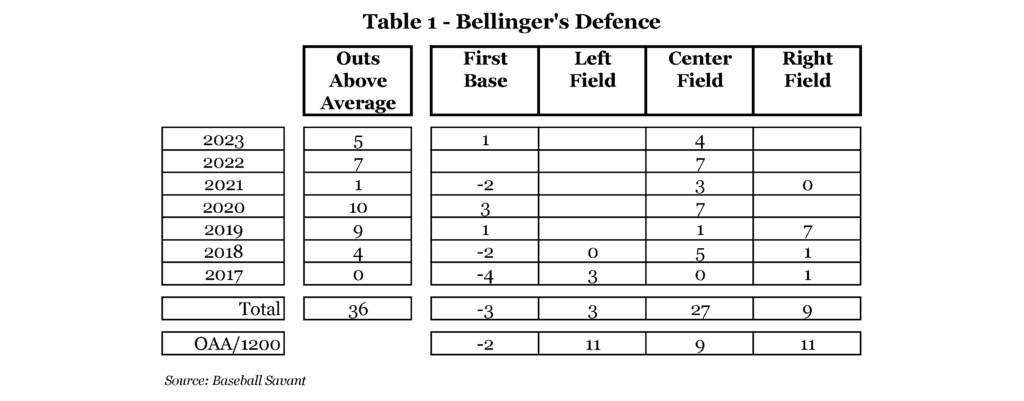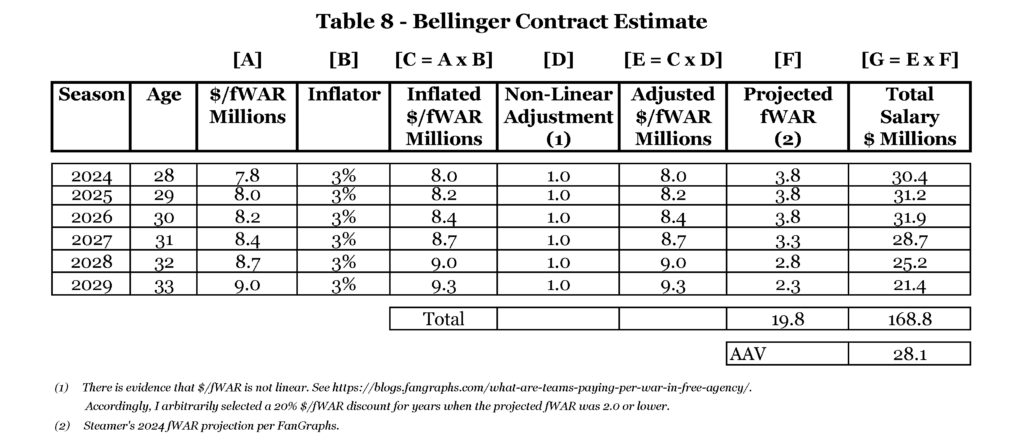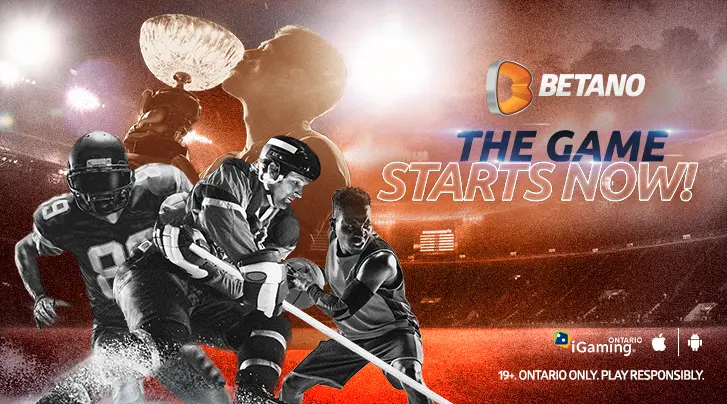Why the Toronto Blue Jays Should Pursue Free Agent Cody Bellinger

Photo credit: MLB Photos - Getty Images
By Bob Ritchie
Dec 16, 2023, 10:00 ESTUpdated: Dec 16, 2023, 14:53 EST
With the news that Shohei Ohtani signed a contract with the Los Angeles Dodgers, it’s time for a deep dive into Cody Bellinger’s candidacy as a Toronto Blue Jay.
FanGraphs rated Bellinger as the Number Three free agent on their 2024 Top 50 MLB Free Agents list. After disappointing seasons in 2021 and 2022, Bellinger signed a one-year, USD 12 million deal to play with the Chicago Cubs in 2023.
Bellinger received and rejected a Qualifying Offer from the Cubs. Also, the Blue Jays are Competitive Balance Tax payors. Accordingly, if Toronto signs Bellinger to a contract, Toronto will forfeit their second and fifth-highest draft slots in the 2024 MLB June Amateur Draft and USD 1 million from its international bonus pool for the upcoming signing period.
Bellinger had a very successful season with Chicago. He posted a 134 wRC+ and a 4.1 fWAR. Concerning defence, Bellinger produced a +1 OAA at first base and a +4 OAA in centerfield. Also, included in that fWAR figure was better than average baserunning, base stealing, and grounding into double plays.
At first glance, Bellinger is an ideal candidate for Toronto, a team with an open outfield position it would like to fill. For his career, he has been an above-average batter (119 wRC+), hits left-handed, will be entering his age-28 season and is an above-average defender who can play multiple positions.
Yet, there is a concern that Bellinger’s 2023 campaign at the plate was a mirage. Therefore, I will address Bellinger’s hitting after I have examined other aspects of his performance. Accordingly, I have organized the analysis as follows:
- Defence
- Baserunning, base stealing and grounding into double plays
- Hitting
- fWAR projections
- Contract estimate
Defence
Bellinger has played many positions during his career. In terms of innings, he has played centerfield (3,612), first base (2,349), right field (969) and left field (315). As you can see in Table 1, Bellinger is better than average in all three outfield positions. If you normalize his OAA numbers over 1,200 innings, Bellinger’s centerfield OAA/1200 is +9, and +11 in left and right field. For your information, Daulton Varsho’s centerfield OAA/1200 is +21. I would be comfortable with Bellinger playing left field and backup to Varsho in centerfield and George Springer in right.

Baserunning / Base Stealing / Grounding Into Double Plays
Table 2 concerns BsR, the sum of UBR, wSB and wGDP. Bellinger runs the bases well, steals bases judiciously (20 of 26 attempts in 2023, 80 of 102 in his career), and grounds into double plays at a rate lower than the MLB average.

Hitting
HardHit%
Before I examine Bellinger’s 2023 hitting, let’s look at the importance of exit velocity on batted balls. MLB’s Baseball Savant website defines a hard-hit ball as one with an exit velocity of 95 mph or higher. In 2023, batted balls with an exit velocity of at least 95 mph averaged BA, SLG and wOBA stats of 0.506, 1.008 and 0.625, respectively. On the other hand, batted balls with exit velocities of no faster than 94 mph reaped BA, SLG and wOBA rates of 0.218, 0.254 and 0.203. Typically, better results occur when a batter makes hard contact than if he makes soft contact.
Last season, Bellinger’s HardHit% ranked in the 10th percentile. That is not very good. Also, concerning the metric Best Speed, which is the average of the top 50% of a hitter’s batted balls by exit velocity, Bellinger ranked 116th of 134 qualified hitters. Hence, Bellinger did not make hard contact at a high rate in 2023.
Boxscore Versus Expected Stats
Expected batting metrics are a function of exit velocity, launch angle, and, on certain types of batted balls, Sprint Speed. Let’s examine Bellinger’s expected stats in Table 3.
There were significant differences between Bellinger’s box score and expected stats. For example, Bellinger’s 0.525 SLG was 94th percentile. However, his xSLG was in the 54th percentile, slightly better than the middle-of-the-pack hitter. The story is similar for OBP, wOBA and ISO. These box score figures ranked well in 2023. Conversely, Bellinger’s xOBP, xwOBA and xISO stats were below the median.
Why be concerned about significant differences between an expected stat and the related box score stat? Because it may indicate that luck may have materially affected a hitter’s box score stats. Concerning Bellinger, the fact that his crucial 2023 box score metrics outstripped his expected stats could indicate that he Is a candidate for downward regression at the plate in 2024. Therefore, his 2023 batting performance may be a mirage.
However, a matter to consider is correlation. In his 2021 article, The Predictive Relationship Between wOBA and xwOBA, Joe Stunardi determined that the correlation between xwOBA and next season’s wOBA is 0.26. In other words, there is a positive relationship between xwOBA and wOBA, but not a strong one. Hence, this season’s xwOBA can help predict next season’s wOBA, but other factors must be considered. Let’s look at some of those aspects.

Shift Limits / Sprint Speed / Baserunning
Table 4 shows that in 2023, Bellinger posted a remarkable 164 wRC+ versus lefthanded pitchers. That mark far exceeded his 98 wRC+ career number before the 2023 season. Do I believe Bellinger will likely produce a 164 wRC+ and a 0.414 wOBA in 2024? No, but he can generate a wOBA higher than his 0.332 career mark. Why?
Please take a look at Table 5. During his career against lefties, Bellinger produced a 0.390 wOBA in non-shift situations, 47 points higher than his xwOBA. Before 2023, Bellinger’s career wOBA against lefthanded pitchers in non-shift situations was 0.370, which exceeded his 0.351 xwOBA.
Two factors can explain why Bellinger’s non-shift wOBA stats have been higher than the related xwOBA metrics. First, Bellinger’s Sprint Speed has been above average (75th percentile in 2023). Second, he runs the bases at an above-average level. Both of these skills should, all things being equal, create a positive wOBA-xwOBA delta. Hence, given these noted factors and MLB’s rule concerning shift limits, Bellinger should continue to produce wOBA numbers similar to his non-shift career performance levels.


Hitting with Two Strikes
In 2022, Bellinger’s K% was 27.3% and 15.6% during the 2023 campaign. His 11.7 percentage-point K% reduction is impressive. Another interesting fact is that 58% of Bellinger’s 2022 plate appearances were with two strikes, higher than 2023’s 52% figure. Also, as points of comparison, 54% of all 2023 MLB plate appearances went to a two-strike count, and the MLB average K% was 22.7%.
Consider Table 6 for more data concerning Bellinger’s performance by strike number. Bellinger’s 2023 numbers with less than two strikes are slightly better than 2022. With two strikes, Bellinger’s 2023 BA, ISO and wOBA stats are noticeably better than in 2022. With two strikes, Bellinger’s 2023 wOBA percentile ranking was 98th, and his xwOBA was 72nd.
The noteworthy change in batting with two strikes is the higher in-zone and out-of-zone 2023 contact rates compared to 2022. In 2023, Bellinger’s in-zone contact rate was 90.3%, higher than 2022’s 78.8%. Concerning out-of-zone contact rate, Bellinger’s 2022 65.2% rose to 79.6%. Given the reduced Barrel/PA% in 2023 compared to 2022 but the much higher contact rates, Bellinger apparently changed his approach with two strikes. Bellinger sacrificed some hard contact for a higher contact rate.
Bellinger’s two-strike performance improvement bodes well for the future. Given that approximately 50% of plate appearances reach the two-strike level, superior relative performance with two strikes will bolster a player’s overall wOBA and xwOBA numbers.

fWAR Projections
Need a table? Hello, Table 7.
The table contains four fWAR scenarios.
- Scenario A – Bellinger’s 2023 fWAR.
- Scenario B – Steamer’s 2024 projection. The input of note is Steamer’s 0.330 wOBA prediction, which corresponds to 108 wRC+ and 6.0 Batting Runs.
- Scenario C – my Bellinger 2024 projection that uses 0.346 as the wOBA input. A 0.346 wOBA matches with a 118 wRC+ and 14.4 Batting Runs.
- Scenario D – The same as Scenario C but with Bellinger as a full-time centerfielder.

Contract Estimate
There is an important point to consider concerning contract estimates. For a given free agent, there is a range of reasonable estimates regarding total value and duration. Shopping for free agents is different from walking into Loblaws, selecting the broccoli bunch that you want and paying the posted $3.99 for your purchase. Signing a free agent is much more complex than grocery shopping.
FanGraphs projected a six-year, USD 150 million contract for Bellinger. MLBTR’s estimate was 12 years, USD 264 million. Yikes!
Table 8 shows my estimate for a six-year contract. For this projection, I used the inputs from Scenario C. If I used the numbers from Scenario B (Steamer’s 2024 performance estimates), the corresponding deal is six years, USD 96.6 million.

A six-year, USD 150 million Bellinger contract is reasonable.
The Last Word
Bellinger is a well-rounded player who is not top-tier in any facet of the game, be it hitting, fielding or running on the base paths. In 2023, Bellinger performed well, especially after disappointing seasons in 2022 and 2021. The risk is that 2023 was a mirage, particularly at the plate.
However, Bellinger’s changed approach with two strikes led to better results last season, and I expect those better outcomes to continue in 2024. Also, the data supports the opinion that Bellinger’s non-shift batting record is sustainable.
At a reasonable price, Bellinger is a free agent worthy of Toronto’s pursuit.
ARTICLE PRESENTED BY BETANO

Breaking News
- Guardians trade former Blue Jay Justin Bruihl to Cardinals
- Report: Yankees presented Cody Bellinger a second contract offer
- Don Mattingly officially joins the Phillies coaching staff
- Blue Jays 2026 40-man Roster Review: Dylan Cease’s potential is sky-high
- 4 teams the Blue Jays do not want to see sign Bo Bichette
